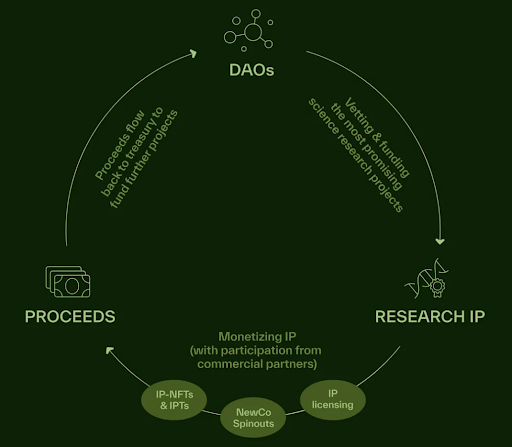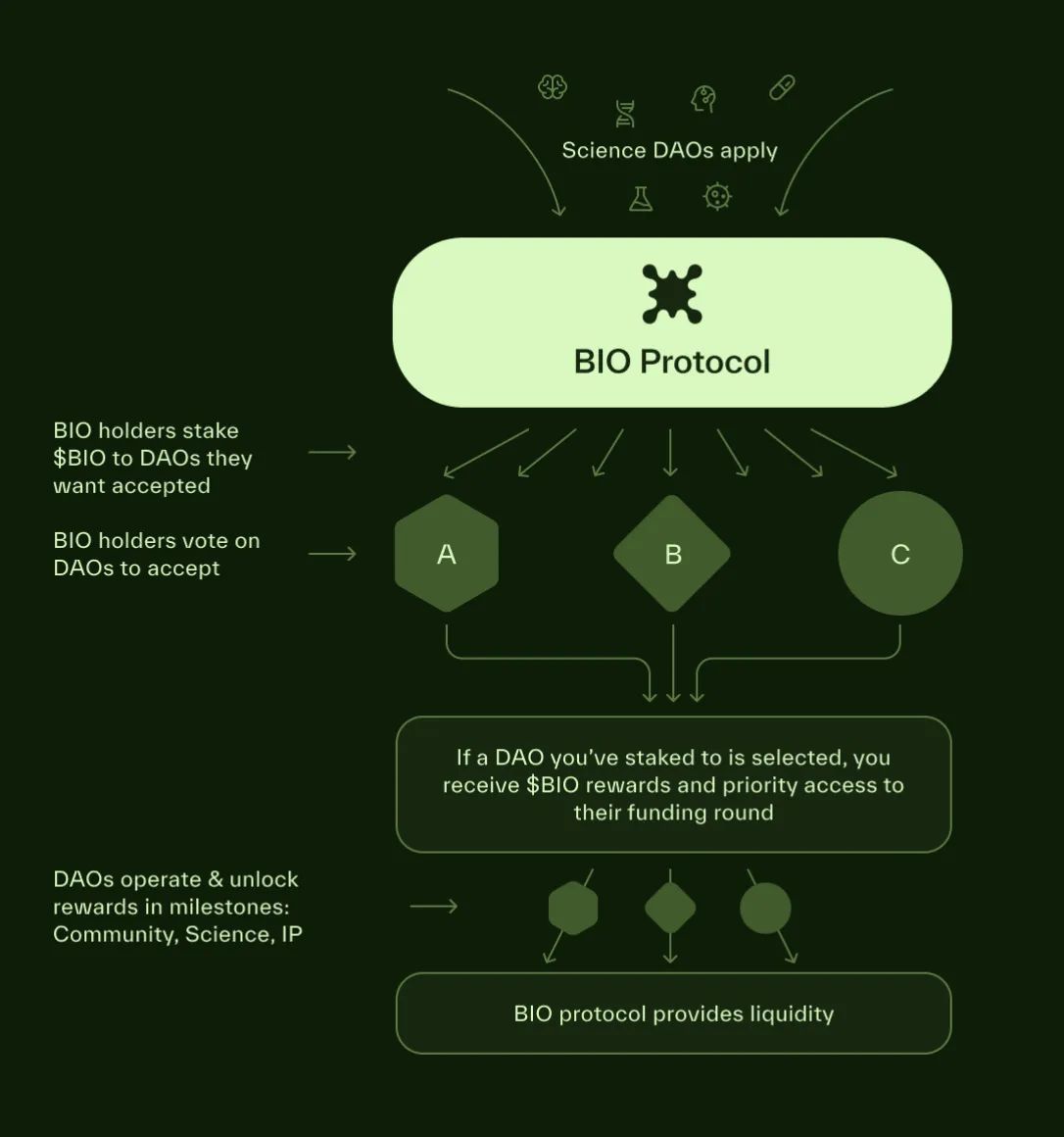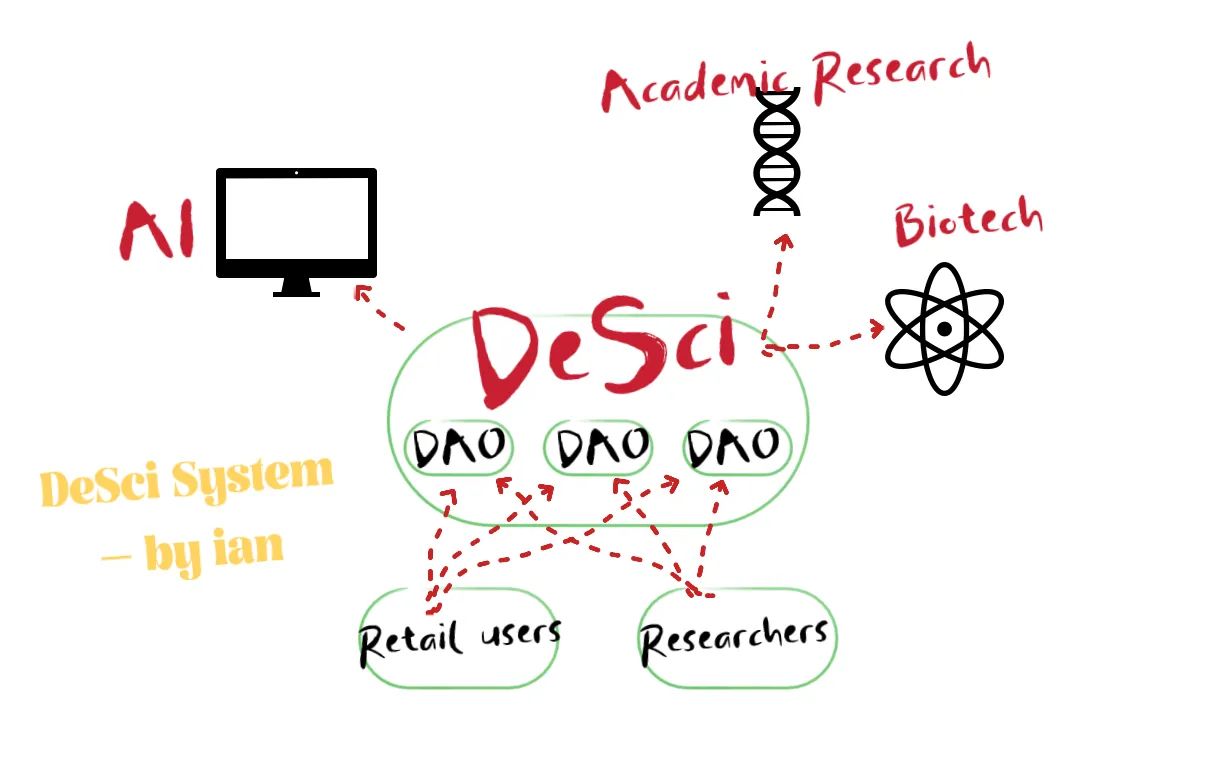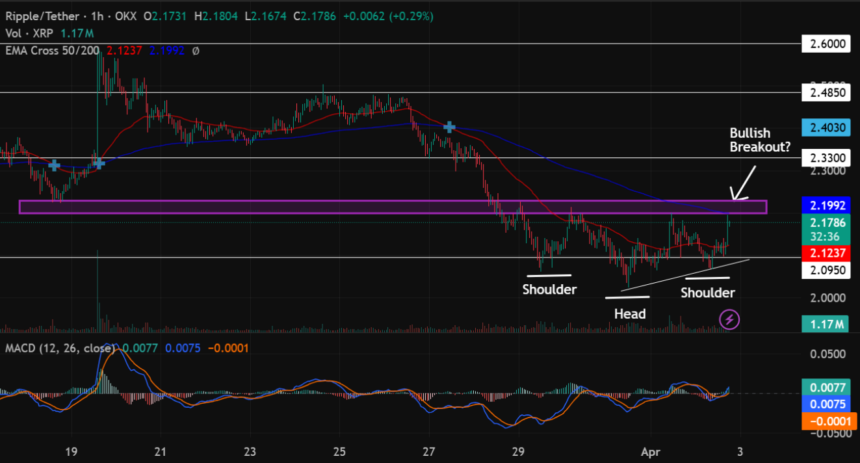About DeSci and BIO

1. Understanding DeSci → Questioning DeSci → Comprehending DeSci
1.1 Understanding DeSci
Pain Points:
The lagging infrastructure around IP maintenance, accessibility, ownership, and revenue distribution for research or knowledge has always been a pain point, especially in academia.
In the complex domain of knowledge sharing and discovery, balancing security, transparency, reward mechanisms, and accessibility remains a persistent challenge. Traditional models often rely on centralized verification systems, which can limit inclusivity and broad participation. Moreover, existing systems may fail to adequately reward or recognize knowledge contributions, potentially impeding the development of a comprehensive collective knowledge base.
Problems Addressed:
The central idea of DeSci is that everyone should have equal access to all levels of science and knowledge, and the process of scientific research should be open and transparent to all. Hence, DeSci aims to create an ecosystem where knowledge contributors are incentivized to share their research, and anyone can permissionlessly access and even iterate on these contents.
This creates a fundamentally different scientific research system, where:
- Funding allocation is decided publicly through mechanisms like DAOs, contrasting with traditional science, which is controlled by small, closed, centralized groups.
- DeSci's vision promotes dynamic collaboration of resources globally, breaking the restrictions set by centralized institutions in traditional science to some extent.
- Fund flows are more transparent and, supported by web3, explore a more efficient economic system, sharply contrasting with the lengthy funding decision-making processes in traditional science. At the same time, token and reputation incentives highlight the value of peer reviews.
- Knowledge contributors can transparently allocate the intellectual property they generate, unlike in traditional science, where IP belongs to the affiliated institution, and access paths are opaque. DeSci also encourages sharing all research data, including unsuccessful attempts, addressing the publication bias in traditional science where only successful results are typically shared.
1.2 Questioning DeSci
The initial intention of DeSci is to establish an ecosystem for scientists or scholars to share academic research and gain ownership of their research IP. For other users, their participation mostly revolves around easier access to these academic studies. Essentially, the ivory tower of academia remains unbroken, and the core players in this ecosystem are still the top scholars.
- Under what circumstances would an average person care about easier access to an academic paper?
It’s likely that apart from pulling all-nighters to finish papers in college, the need rarely arises after graduation. From a certain perspective, we must acknowledge that the ability to contribute valuable academic IP is held by only a small group of people.
However, when examining the field and the narrative, this is precisely the issue with DeSci—it is too pure and noble, making it difficult to realize the true value web3 can bring, namely community effects and an efficient economic system. Focusing closely, the foundation of DeSci is not an open knowledge contribution platform but should instead be a vibrant ecosystem based on an efficient token system and strong community effects. This economy relies on broad user participation, and if users cannot genuinely engage with the system or lack sufficient motivation to hold and trade tokens, the token price, liquidity, and economic system will be unsustainable.
Therefore, having only scientists as core players obviously doesn’t make sense and cannot establish a sustainable mechanism.

2. What Kind of DeSci Makes More Sense
2.1 Understanding DeSci
- Science =/= Knowledge
DeSci should not merely be the domain of scientists but should instead lower the barrier for ordinary people to engage with science. Therefore, it’s better to avoid overusing the term “science” and instead emphasize “knowledge.” Science inherently sets a threshold for DeSci, whereas knowledge can encompass data in any form or field.
Contributing knowledge from one's professional field or areas of interest is inherently appealing and can easily generate viral effects. Thus, broadening the definition from “science” to “knowledge” allows for greater community participation and enables web3 to realize its full potential.
I believe DeSci should adopt a pyramid structure, classifying the participants and contributors across the entire knowledge-sharing pipeline into different tiers, each indispensable. Scholars, as participants at the apex of the pyramid, contribute the core value of DeSci itself while creating project highlights. For instance, in the context of new drug development, if DeSci can participate in or facilitate the launch of a drug, the attention it brings to the field and the project would be immeasurable. Community users, as participants at the base of the pyramid, have their own foundational mechanisms to engage with. They maintain the efficient operation of the entire ecosystem and economic system.
2.2 The Foundation of DeSci — BIO
2.2.1 Introduction to BIO
BIO Protocol is a decentralized scientific financial infrastructure aimed at promoting biotechnology innovation through community collaboration. It provides tools for funding, developing, and governing scientific intellectual property (IP) to accelerate the commercialization of biotechnology research for a global community, including patients, scientists, and biotechnology professionals.
Core Functions and Mechanisms: Supporting Decentralized Biotechnology Organizations - BioDAOs
2.2.2 BIO in-depth
1) Technical Details
The technical stack and architecture of BIO Protocol are designed to support the tokenization and on-chain governance of biotechnology IP.
- By developing a customized blockchain, BIO Protocol ensures that the processes of biotech development, commercialization, and transactions are transparent, verifiable, and secure, while also reducing transaction costs.
- The IP-Token mechanism, based on smart contracts (SC), assigns each IP asset a unique token and defines its ownership and transaction rules. Users can acquire partial or full ownership through transactions, enabling secondary market circulation and trading while protecting biotech research IP.
- With a DAO-based architecture, members manage and fund research projects through BIO tokens. Each DAO can focus on specialized research fields, such as VitaDAO on longevity research and CryoDAO on cryonics.
2) Operational Model Analysis
- BioDAO

The parent platform BIO Protocol provides BioDAOs with:
- Funding: Each BioDAO receives seed funding from the BIO Protocol treasury upon approval. This funding helps BioDAOs gain initial capital to support early-stage research projects and expand their influence.
- Liquidity Support: BIO Protocol ensures on-chain liquidity for BioDAOs, allowing them to focus on scientific research without worrying about market liquidity management. This liquidity support enhances the tradability and market value of BioDAO tokens.
- Governance: BIO Protocol establishes a meta-governance layer by holding tokens of multiple BioDAOs. BIO token holders can participate in and decide on operations, funding allocation, and development directions for multiple BioDAOs, ensuring coordination in funding flow and research priorities across the ecosystem.
- IP Commercialization: Through its IP tokenization mechanism, BIO Protocol helps BioDAOs transform scientific research outcomes into tradable IP assets. This process allows BioDAOs to tokenize research project IP and trade it on-chain, enabling early-stage capital support and market valuation of intellectual property.
- Standardized Framework: BIO Protocol provides a standardized framework for the creation and operation of BioDAOs, including tokenomics design, governance structure, and data management tools. By standardizing frameworks and support, BIO Protocol reduces the difficulty of creating new BioDAOs, enabling quicker market entry and effective operations.
- Curation

Curation Process
- Application Submission: New BioDAOs apply to join the BIO ecosystem. Applicant BioDAOs must have a clear research direction and initial governance structure to ensure they can effectively pursue their research goals.
- Voting Support: BIO token holders can lock their BIO tokens to obtain voting rights (vBIO). vBIO holders use these voting rights to vote on candidate BioDAOs to decide whether to support their inclusion in the ecosystem.
- Curation Rewards: If a BioDAO's application is successful, vBIO holders who voted for it receive the following rewards:
- The opportunity to participate in whitelist funding for the BioDAO, gaining priority to invest in its tokens.
- Priority access to or discounts on products, data, or services offered by the BioDAO.
- Ecosystem Entry: BioDAOs successfully curated receive initial funding and support from BIO Protocol and are incorporated into the BIO ecosystem. BIO Protocol continues to provide funding, liquidity, and governance support for them.
- Reward Mechanism
Bio/Acc rewards are distributed in the form of BIO tokens, including the following scenarios:
- Initial token auctions via the BIO launchpad
- Research funding through IP token issuance
- Sales of IP-related consumer products
- Products entering clinical trial stages
Rewards can also directly flow to users of BioDAO products:
- Participating in clinical trials or self-reporting health data
- Using/purchasing products such as Follistatin, Vitarna, electronic implants, etc.
- IP-Token
- BioDAOs develop and own the IP tokens of their assets. Each BioDAO typically holds a portfolio of IP tokens related to its specific scientific research domain. For instance, VitaDAO develops and owns equity in VitaRNA and VITA-FAST IPTs.
- Operation of IP Tokens: In addition to potential profit-sharing rights, IPT holders benefit from the following:
- Governance Rights: Participate in critical decisions related to the development, management, and licensing of the intellectual property.
- Priority Access: Gain preferential or discounted access to innovations, collaborations, or future opportunities tied to the intellectual property.
2.2.3 Why We Invest in BIO
- Balancing security, transparency, and incentives in scientific research has remained unsolved. BIO has built the largest DeSci platform to date, ensuring security and transparency while financializing scientific research with significant economic potential. Through countless community-curated BIO subnetworks (e.g., VitaDAO), it commercializes user-generated value and returns it to users via profit-sharing. As a result, $BIO continually captures the value created by all DeSci subnetworks, making it the most valuable token in the DeSci space. In the long run, as humanity's demand for health and longevity continues to grow, BIO significantly lowers the barriers to participation and usage in related fields, making it a project worth long-term investment.
- The product has undergone extensive accumulation and iteration over time. The ecosystem has already seen the emergence of star projects like VitaDAO, proving the feasibility of the operational model and the demand for the product from both capital and academia. Additionally, the founding team has strong experience in both scientific research and web3. James, the founder of OrangeDAO, also participated as a founder in YC19W; Paul, the founder of VitaDAO and Molecule, holds top influence in the DeSci field.
3. More than DeSci
The potential of DeSci for the industry is far beyond just conducting research or drug discovery. As previously discussed, if DeSci's scope is confined solely to science, the value and scalability of this field would be significantly limited. However, incorporating the concept of co-building knowledge—where "knowledge" can encompass data of any domain, dimension, or size—turns the process of building DeSci into the creation of a vast, dynamic database.

How to Combine DeSci + AI?
Furthermore, DeSci should focus on fragmenting knowledge. Rather than positioning DeSci as a decentralized research platform, it should be viewed as a system where everyone has the opportunity to contribute to knowledge co-building. This approach inherently complements the community attributes of web3. In DeSci’s ecosystem, different domains of data organization would naturally emerge. For instance, Gym DAO could gather people interested in fitness or possessing relevant knowledge, Longevity DAO could bring together individuals passionate about biomedical sciences, or even bounty-based DAOs could form.
Consider a navigation model that requires data on traffic flows and terrain from different streets in a specific region. These are not systematic datasets but can be collected by individual contributors. These participants might be experts or enthusiasts in the respective fields. With DeSci’s support, the knowledge contributed by anyone can continuously be enriched by other contributors, and DeSci allows each participant’s data to generate value and earn ongoing revenue sharing.
The most compelling aspect here is that while anyone’s knowledge and data are inherently limited, these pieces of data undeniably hold value, to varying extents. Any research endeavor begins with the accumulation of foundational knowledge. By leveraging community co-building to aggregate fragmented data into large-scale datasets, a synergistic effect of 1 + 1 > 2 can emerge.
To truly establish this web3-based knowledge repository, the primary task is building communities and expanding the user base to create viral growth—even onboarding researchers at the initial stage can take a backseat. This approach diverges from most traditional DeSci strategies but feels more crypto-native. Retail participants’ motivation to join and hold tokens lies in staking to contribute data to data organizations, earning incentives or staking returns. The more valuable their data, the more frequently it will be referenced or associated, leading to greater external income and native rewards for the corresponding data organization. Thus, this mechanism not only incentivizes user participation but also enhances data quality.
In such a large system, there will inevitably be users who contribute little or submit low-quality data. However, the generation of such garbage data does not hinder the system’s operation. These users are still allowed to provide data, staking for a chance to earn the lowest tier of community rewards.
Author: Ian@Foresight Ventures
About Foresight Ventures
Foresight Ventures is the first and only crypto VC bridging East and West. With a research-driven approach and offices in the US and Singapore, we are a powerhouse in crypto investment and incubation. Our premier media network includes The Block , Foresight News , BlockTempo , and Coinness . We aggressively invest in the most daring innovations. We are dedicated to partnering with visionary projects and top teams to help them succeed, reshaping the future of digital finance and beyond.
For more information, visit: Website | Twitter | LinkedIn | Discord | Linktree
For media requests, please contact [email protected] .
This post is commissioned by Foresight Ventures and does not serve as a testimonial or endorsement by The Block. This post is for informational purposes only and should not be relied upon as a basis for investment, tax, legal or other advice. You should conduct your own research and consult independent counsel and advisors on the matters discussed within this post. Past performance of any asset is not indicative of future results.
Disclaimer: The content of this article solely reflects the author's opinion and does not represent the platform in any capacity. This article is not intended to serve as a reference for making investment decisions.
You may also like
Bitcoin Tops $86K on ‘Liberation Day’

Bitcoin ETFs Face Heavy Sell-Off With $158 Million Exit

Trump enacts 10% tariff on all imports, ramps up pressure on 60 countries

Trump’s Liberation Day Tariff Live: Impact on Crypto Market

